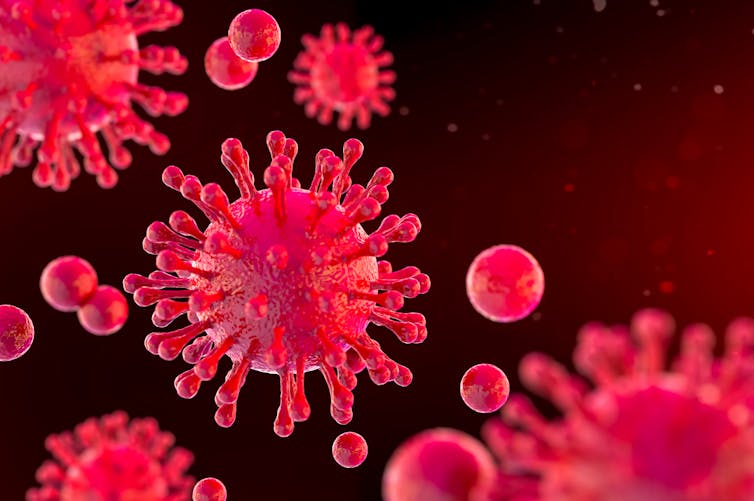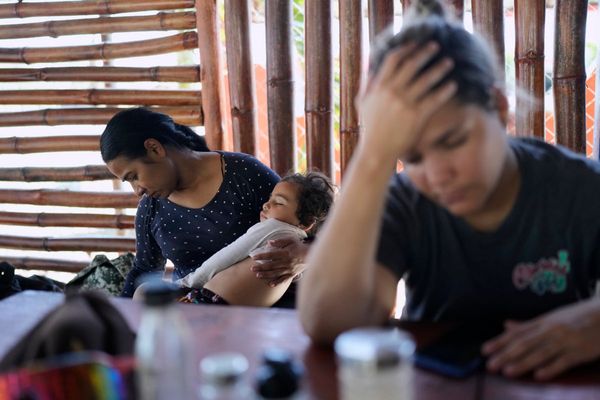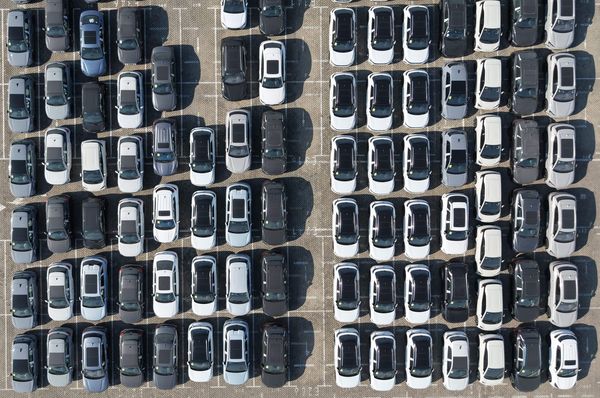
COVID boosters will be available to buy from high-street pharmacists and private healthcare providers across the UK in 2024.
The news comes just weeks after the UK government announced that free boosters would only be available on the NHS for over-65s this autumn.
As we adapt to living with COVID, prioritising resources (such as vaccines) to the most vulnerable people seems a sensible approach. But the consequences this will have on the spread of COVID is less clear.
In many countries, most the population now have high levels of hybrid immunity against COVID, thanks to the combined effects of vaccination and immunity from COVID infections. This means our immune systems are well equipped to recognise and kill COVID if we become infected. In the UK, this high level of immunity is reflected by the low level of COVID deaths and hospitalisations presently seen compared to early in the pandemic.
From the beginning of July, however, the number of people with COVID admitted to hospital in England has started to increase. Many factors will be contributing to this upward trend – but a gradual waning of immunity to COVID may partly be to blame.
Although this waning in immunity can begin to occur within months of vaccination, it can be quickly and safely restored after a booster shot. But if boosters are less available, it may leave more people vulnerable to COVID infections – and more likely to spread the virus as well.
Baca juga: COVID: here's why cases have seen a small spike this summer
There are also many other factors that can affect the spread of COVID – such as the emergence of new variants, which may escape the immunity we’ve built over the years.
Two new COVID variants have been identified in the UK this summer – EG.5 (eris) and BA.2.86 (pirola). While the eris variant may be more transmissible and better equipped to escape the protection of vaccines, this doesn’t appear to cause more serious disease. As such, it’s considered a low public health risk.

But BA.2.86 has begun to raise concern due to the high number of mutations in its genetic code. At present, we don’t have enough information to determine how well this variant can escape our immunity, whether infections will be more serious and what effect this will have on health services at a time when flu and other respiratory diseases are circulating.
It’s because of this uncertainty that the panel of experts on the UK’s Joint Committee on Vaccination and Immunisation recommend boosters still be offered in the autumn to people who are most vulnerable to serious COVID infections, hospitalisation and death. Details on the type of booster vaccine that will be used and whether they will target single or multiple coronavirus variants are yet to be released.
Flu v COVID
Offering boosters to purchase from next year is a similar strategy to the one used for the seasonal flu vaccine.
Data from 2022’s seasonal flu vaccination campaign in England show that 82% of GP-registered patients over 65 years old had a flu vaccine. Only around 46% of over-50s (who were not vulnerable) opted for a flu vaccine. Remarkably similar levels of COVID-19 booster vaccine uptake were reported during the same time.
But with COVID boosters no longer being offered for free to under-65s this year, it raises concerns about how many people will actually pay for the COVID booster. While the incidence of serious COVID infections, hospitalisation and death are fortunately much lower in younger age groups, a large increase in infections as immunity wanes could begin to put additional strains on health services.
Another potential barrier to optional vaccine uptake is the cost. This is something that is currently being negotiated.
Cost is a factor
COVID and flu vaccine uptake was shown to be approximately nine percentage points lower in the most deprived areas of Greater Manchester in the UK, compared to the least deprived areas, especially among most minority ethnic groups. If reports are correct and private COVID boosters cost over £100, compared to the relatively low cost of a private flu shot in the UK (between £10-20), this will likely limit their uptake to those with higher incomes, presenting a significant barrier to those who can least afford them.
On the other hand, analysis of flu vaccination campaigns in the UK has shown that some people actually prefer to pay for a booster even if they’re eligible for a free vaccine because it’s more convenient. As many as 36% of the people in this study reported they would not have had a vaccine if they didn’t have the option to pay for it and have it at a time and place of their choosing.
Throughout the pandemic the vaccinations have been prioritised to the most clinically vulnerable groups. Doing so is estimated to have saved over one million lives in Europe alone – especially in those over 60 years of age. So while free boosters will continue to help protect the most vulnerable, it’s still unclear what effect this new policy will have on the spread of COVID among other groups.
Neil Mabbott receives grant funding from the Biotechnology and Biological Sciences Research Council, the Medical Research Council and ZOETIS.
This article was originally published on The Conversation. Read the original article.







